Over the years I’ve transformed from being a backpacker to more of a flashpacker. Part of this transformation has to do with my ever demanding taste buds that constantly are on the lookout for exotic foods. When I landed in Finland for the first time, roughly one month ago, I was just as eager to sample local Finnish cuisine as I was to explore Helsinki and engage in adventure sports in the Finnish Archipelago.
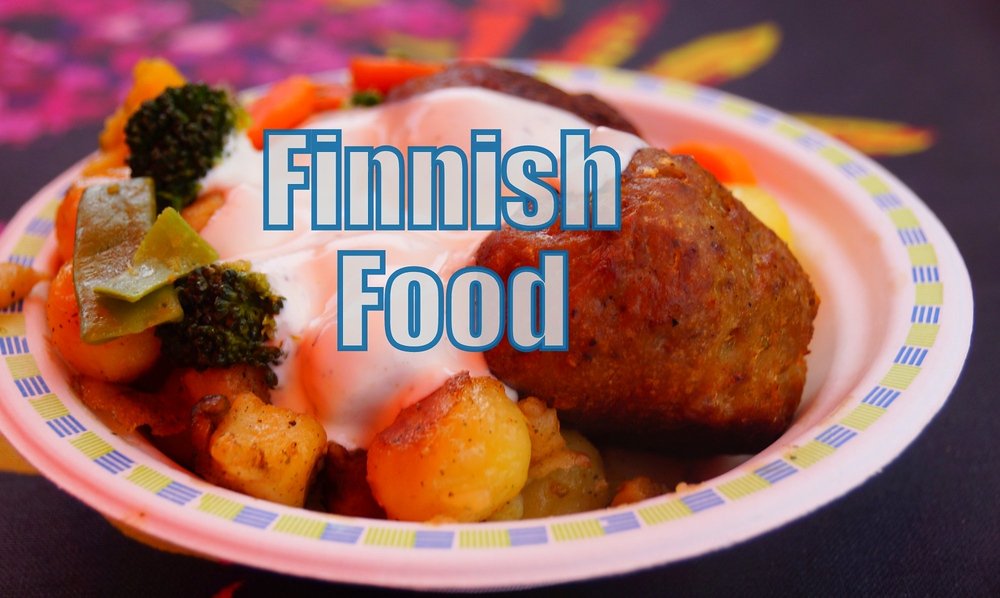
Arriving without many preconceived expectations, I was wearing my culture vulture crooked hat with the idea I’d just dig right in – indulging in as many Finnish foods as I possibly could.
The following is a sample of some of my favorite Finnish treats, in chronological order, as they appear in the video:
Finnish Reindeer Meat
I grew up idolizing Rudolph the red nosed reindeer. How could I possibly think of sinking my teeth into Santa’s Little Helper? Well, considering I’ve tried exotic meats such as llama in Peru and dog in South Korea, I’m always game for trying something at least once.
A lovely plate of assorted Reindeer cold cut meat was brought to our table with a side of lingonberries and potatoes lightly dressed with a vinaigrette.
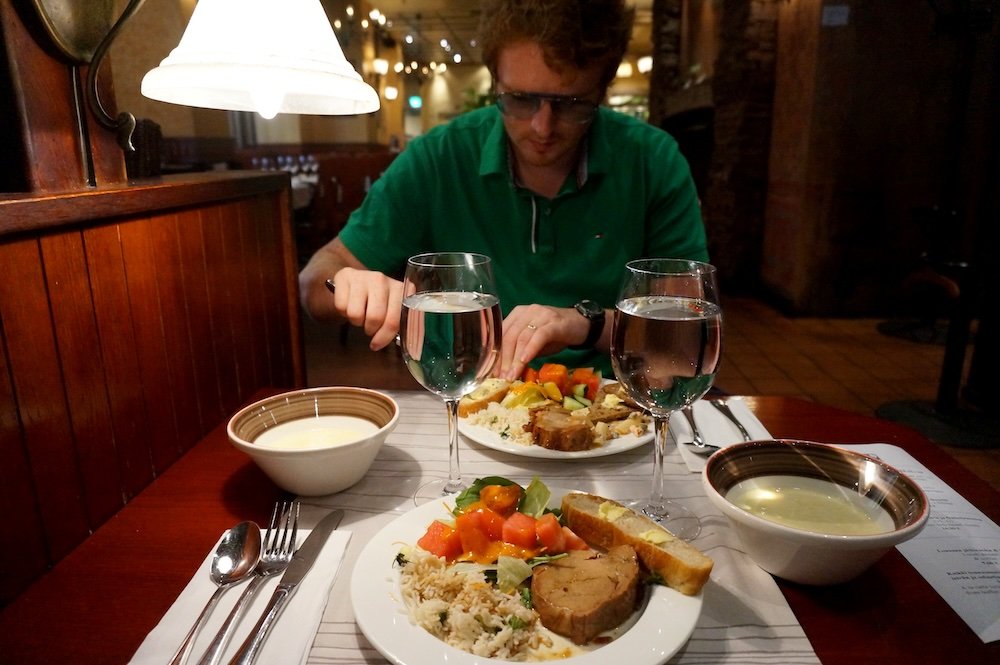
My first bite of authentic Reindeer meat (more on that later) immediately had me thinking this was the richest meat I’ve ever tasted. Tender and rich in flavor it certainly tasted like other game meat I’ve tried in the past. I noticed immediately it had a bit of a sour aftertaste. Although, I wouldn’t rank it as my favorite meat, by any stretch of the imagination, I would certainly try it again. In fact, I did get to sample it again in the form of meatballs which had more of a generic taste. If I had to choose between the two I would definitely go with the cold cuts.

Salmiakki (Salty Black Licorice)
I come from a family who adores licorice in all shapes, sizes and flavors; however, I’ve never tried salty licorice before in my life. Many foreigners, trying Finnish salty licorice for the first time, spit it out immediately as it simply overwhelms their palette with its overpowering astringent, salty flavor; if you search on YouTube, you can have a laugh watching them cringe as they pop it in their mouth. Prior to eating my first bite of Salmiakki, I was convinced I was going to like this.
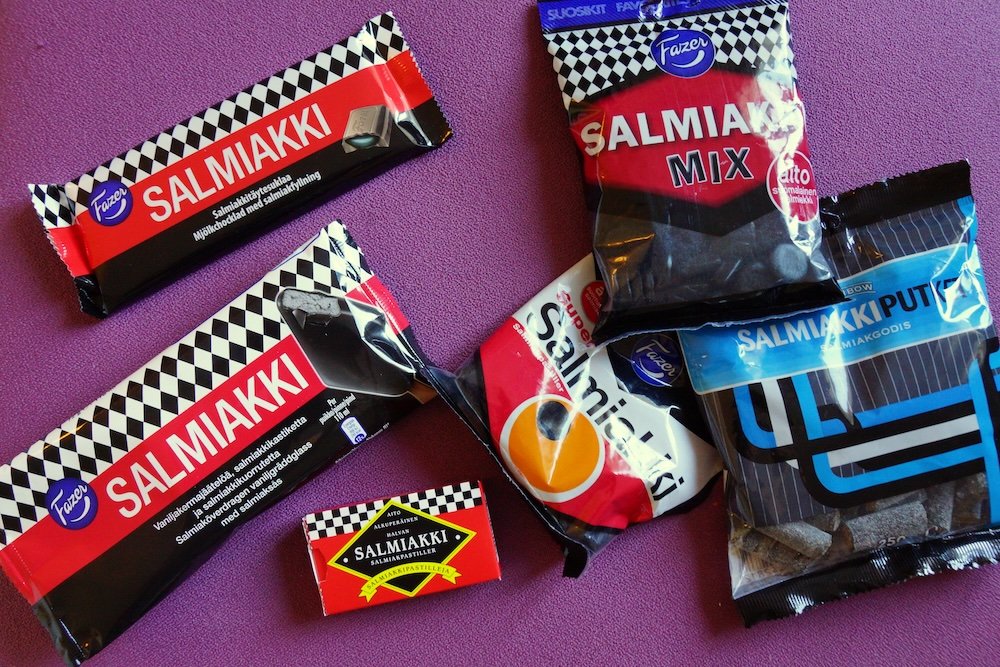
Unsurprisingly, I did. In fact, I couldn’t stop devouring it! It’s certainly one of those polarizing foods that you one typically either loves or hates. Audrey, ended up spitting it out (which you’ll notice if you watch the video clip above). Salmiakki, is a staple in Nordic countries and is especially popular in Finland. It reminds me of the love affair Aussies have with Vegemite; an acquired taste (or not) for most.
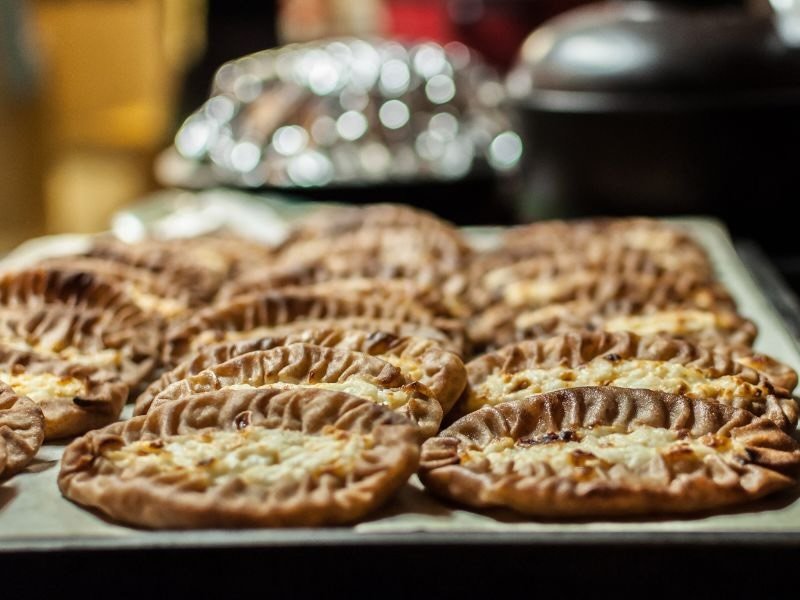
Karelian Pastries
While having breakfast at the Finnish Jailhouse Hotel in Helsinki, we noticed a peculiar shaped pie being offered up as part of the breakfast buffet. These pastries, typically made from a thin rye crust have potatoes, buckwheat, barely, rice or millet as a filling.
The ones we tried had potatoes inside and were an immediate hit; we both ended up going back for seconds. Known locally as karjalanpiirakat or karjalanpiiraat these pastries are also a quite popular in Estonia.

Salmon with Rye Bread & Cream Cheese (or hummus) spread
Last but certainly not least is Finnish smoked salmon used as a topping for rye bread with copious amounts of cream cheese and/or hummus spread. This literally became our favorite picnic meal or do it yourself dinner during our short stay in Finland. As salmon worshipers, we couldn’t get enough of this stuff; literally, eating it every day at least once.
What enhanced things even more was pairing the salmon with Finnish rye bread. On our flight from Instanbul to Helsinki, we started chatting with a Finnish girl returning home from extended travels. We asked her what Finnish foods she missed the most – without hesitation she stated rye bread.
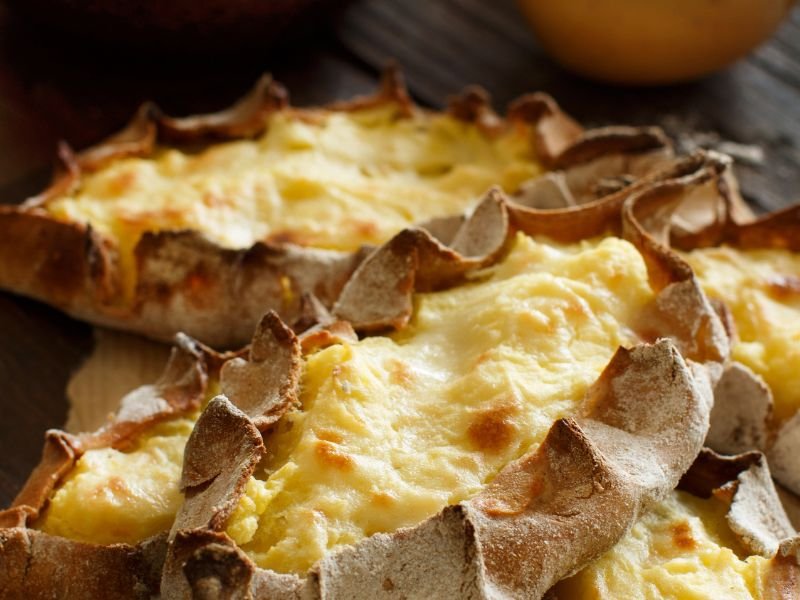
Karjalanpiirakka
Karjalanpiirakka, or Karelian pasty, is a beloved Finnish delicacy. Originating from the Karelia region, these small, rye-crusted pies are typically filled with rice porridge, although variations with potato or carrot fillings are also popular. The contrast between the hearty, slightly tangy rye crust and the creamy, comforting filling creates a unique flavor profile.
- Hearty Rye Crust: The rye dough used for Karjalanpiirakka is rolled thin, creating a sturdy yet tender shell that perfectly complements the creamy filling. The robust flavor of the rye adds depth to the overall taste, making each bite both hearty and satisfying.
- Creamy Fillings: Traditionally filled with a simple rice porridge, the filling is rich and creamy, offering a comforting contrast to the more robust crust. Whether it’s the classic rice or variations like potato or carrot, the filling is always the star of the show.
- Traditional Serving: Often enjoyed with a generous spread of egg butter (a mixture of hard-boiled eggs and butter), Karjalanpiirakka is traditionally served warm. The egg butter adds a rich, savory element that elevates the simple ingredients to a whole new level of deliciousness.
- Cultural Significance: This dish holds a special place in Finnish hearts, representing resilience and tradition. The Karelian pasty has been passed down through generations, making it a true staple of Finnish cuisine.
Ruisleipä
Ruisleipä, or Finnish rye bread, is much more than just bread. Made from wholegrain rye, this dense, dark bread is known for its rich, slightly tangy flavor and hearty texture. It’s a staple in Finnish households, often enjoyed with butter, cheese, or cold cuts, and is an essential part of everyday meals.
- Hearty and Nutritious: Ruisleipä is packed with fiber and nutrients, thanks to its wholegrain rye base. Its dense texture makes it incredibly satisfying, keeping you full and energized throughout the day.
- Distinctive Flavor: The natural sourness of the rye, combined with the long fermentation process, gives Ruisleipä its distinctive taste. It’s a flavor that’s both earthy and slightly sour, offering a unique bread experience that’s deeply rooted in Finnish tradition.
- Tradition and Heritage: Ruisleipä is often made using traditional methods passed down through generations. Many Finnish families still bake their own rye bread, maintaining a connection to their heritage and the land that produces the rye.
- Versatility in Every Meal: Ruisleipä can be enjoyed in many ways—whether as a simple slice with butter, as the base for an open-faced sandwich, or alongside a bowl of hearty Finnish soup. Its versatility makes it a beloved part of Finnish cuisine, adaptable to any meal.
Kalakukko
Kalakukko is a traditional Finnish dish that’s as hearty as it is unique. Originating from the Savonia region, this savory pie is made by encasing fish—usually perch or vendace—along with pork and bacon, in a dense rye bread crust. The ingredients are then slow-baked for several hours. This allows the flavors to meld together into a rich, satisfying meal. The result is a dish that’s packed with the earthy flavors of the Finnish countryside.
- Slow-Cooked Perfection: The long baking process ensures that the fish becomes tender and flavorful, while the rye crust absorbs the juices, creating a deliciously moist and savory filling.
- A Meal in Itself: Kalakukko is a complete meal encased in bread. The combination of fish, pork, and rye makes it a nutrient-dense dish that’s both hearty and satisfying.
- Cultural Heritage: Kalakukko is deeply rooted in Finnish culture. Making it is considered an art, with recipes passed down through generations. It’s a dish that embodies the simplicity and resourcefulness of Finnish cuisine.
- A Rustic Delight: The dish’s rustic nature and deep flavors offer a connection to Finland’s agricultural past, making it a must-try for anyone interested in authentic Finnish food.
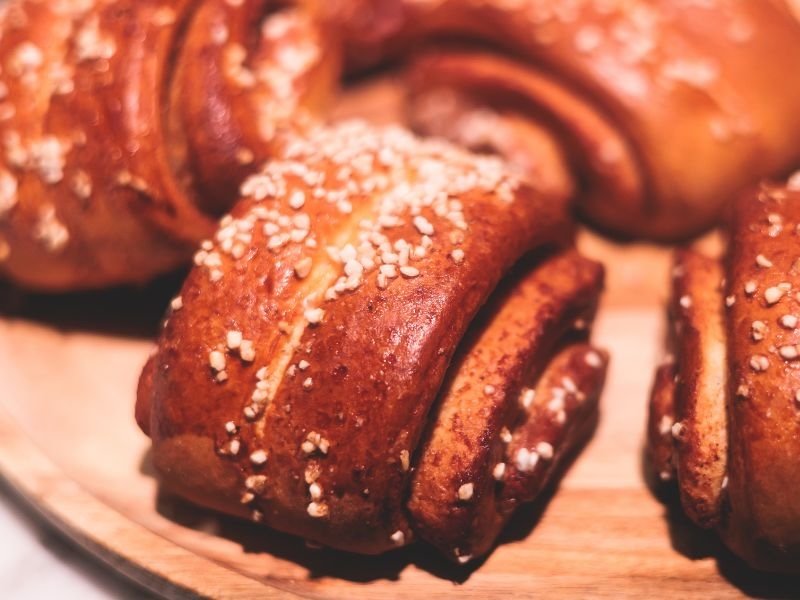
Korvapuusti
Korvapuusti isoften referred to as the Finnish cinnamon roll. It’s a pastry that embodies the warmth and comfort of Finnish baking. These delicious rolls are made from a rich, buttery dough, generously spiced with cinnamon, and sweetened with sugar. Unlike other cinnamon rolls, Korvapuusti are known for their unique shape—flattened and folded, with the cinnamon spirals visible on top, and often sprinkled with pearl sugar for a delightful crunch.
- Unique Shape and Texture: The distinct folding technique gives Korvapuusti its characteristic shape, with layers of cinnamon-sugar goodness in every bite. The dough is soft and fluffy on the inside, with a slightly crisp exterior, making it a perfect combination of textures.
- Aromatic Spices: The cinnamon in Korvapuusti isn’t just a flavor; it’s an aroma that fills the air, making these pastries irresistible as they bake. The warm, inviting scent of freshly baked Korvapuusti is enough to draw anyone into a café or bakery.
- Café Culture: You’ll find Korvapuusti in almost every Finnish café, making it a must-try for visitors. It’s the perfect accompaniment to a cup of coffee, especially during the cold winter months when a warm, spiced pastry is just what you need to feel cozy.
- Homemade Goodness: Many Finns bake Korvapuusti at home, often using recipes passed down through generations. The act of baking and sharing these rolls is a cherished tradition, bringing families and friends together.
Hernekeitto
Hernekeitto, or Finnish pea soup, is a must-try dish for anyone visiting Finland. Made from dried peas, often with the addition of smoked ham or pork, this thick, hearty soup is traditionally served on Thursdays in Finland. It’s often followed by a dessert of pancakes (pannukakku). The soup’s simplicity is what makes it so special—just a few ingredients, slow-cooked to perfection, result in a dish that’s both satisfying and full of flavor.
- Simple Ingredients, Rich Flavor: Hernekeitto is made with just a handful of ingredients—peas, ham or pork, onions, and a few seasonings. The long cooking time allows the flavors to meld together, creating a soup that’s rich, savory, and deeply comforting.
- Traditional Thursday Meal: In Finland, Hernekeitto has a long tradition of being served on Thursdays, dating back to when it was common to fast on Fridays. This tradition continues today, with many Finns enjoying a bowl of this warming soup as part of their weekly routine.
- Historical Roots: The tradition of eating Hernekeitto on Thursdays is thought to have originated in the Middle Ages, tied to Catholic practices of fasting on Fridays. This practice has continued in Finland, making Hernekeitto a dish with deep cultural and historical roots.
- Communal Experience: Hernekeitto is often enjoyed in communal settings, whether at home with family or in a public cafeteria. It’s a dish that brings people together, offering warmth and nourishment, especially during the cold winter months.
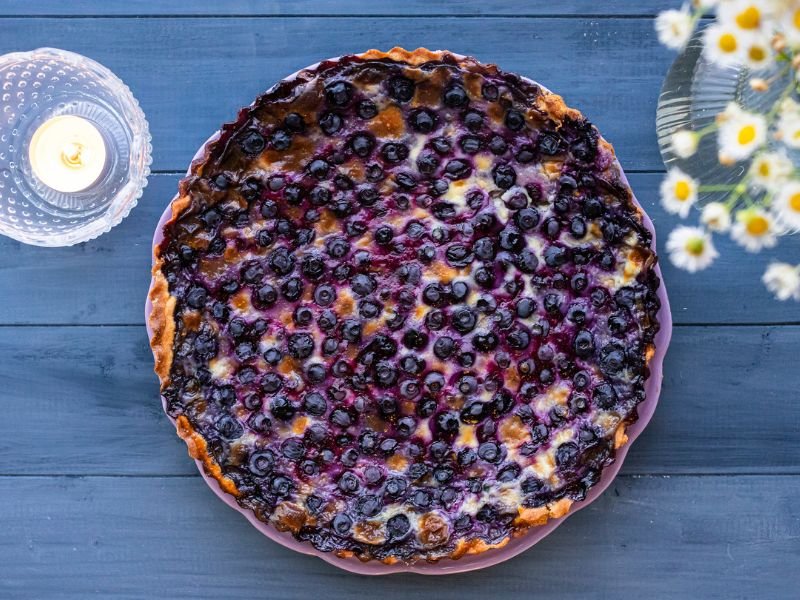
Mustikkapiirakka
Mustikkapiirakka, or Finnish blueberry pie, is a delightful dessert that showcases the bounty of Finland’s forests. Made with fresh or wild blueberries, this pie is beloved for its simplicity and natural flavors. The crust is typically a buttery, shortbread-like dough, providing the perfect base for the sweet and slightly tart blueberry filling. It’s a dessert that embodies the Finnish love for nature, using ingredients that are often foraged during the summer months.
- Fresh and Wild Berries: In Finland, wild blueberries, known as bilberries, are abundant during the summer. These smaller, more flavorful berries are the star of Mustikkapiirakka, giving the pie a distinct, tangy taste that’s less sweet than cultivated blueberries.
- Simple and Rustic: The pie is often made with a straightforward recipe, letting the natural flavor of the berries shine. It’s a dessert that feels both homey and indulgent, perfect for enjoying with a cup of coffee.
- Summer Tradition: For many Finns, summer isn’t complete without picking berries and baking Mustikkapiirakka. It’s a tradition that connects people to the land and the rhythm of the seasons.
- Versatile Dessert: Mustikkapiirakka can be enjoyed warm with a scoop of vanilla ice cream or served cold, allowing the flavors to meld even further. It’s a versatile dessert that’s just as good as a simple weekday treat or a special occasion dessert.
Leipäjuusto
Leipäjuusto is better known as Finnish squeaky cheese or bread cheese. Made from cow, goat, or reindeer milk, this fresh cheese is known for its mild flavor and characteristic “squeak” when chewed. It’s typically served warm, either grilled or heated, which enhances its soft, chewy texture and brings out its gentle, milky taste.
- Mild and Versatile: Leipäjuusto has a mild, slightly tangy flavor that pairs well with both sweet and savory accompaniments. It’s often enjoyed with cloudberry jam or dipped in coffee, offering a balance of flavors that’s both comforting and intriguing.
- A Regional Specialty: While Leipäjuusto is popular across Finland, it’s especially cherished in the northern regions, where it has been a staple for centuries. The cheese is often made by hand, following traditional methods that have been passed down through generations.
- Traditionally Served Warm: The traditional way to enjoy Leipäjuusto is warm, which makes it an ideal dish for chilly days. Heating the cheese enhances its texture and flavor, making it a comforting treat that’s perfect for sharing.
- Pairing with Cloudberry Jam: One of the most popular ways to enjoy Leipäjuusto is with a spoonful of cloudberry jam. The tartness of the berries complements the mildness of the cheese, creating a delightful contrast that’s quintessentially Finnish.
Now over to you! What is your favourite Finnish food?




Finland’s mix of bold flavors and traditions makes every bite an adventure—loved your take on it! 🇫🇮✨
I loved reading about your experiences with Finnish cuisine! I’ve always been curious about the unique flavors and dishes. Your description of the carelian pasties has me eager to try making them myself. Can’t wait to explore more of Finland’s culinary delights!
I love the idea of exploring Finnish cuisine! The combination of fresh ingredients and unique flavors is so appealing. I can’t wait to try dishes like Karjalanpiirakka and Ruisleipä on my next visit to Finland. Thanks for sharing your culinary journey!
I absolutely loved this post! I’ve always been curious about Finnish cuisine but never knew where to start. Your descriptions of traditional dishes like reindeer stew and karjalanpiirakka made my mouth water! I can’t wait to try making some of these recipes at home. Thanks for the recommendations!
I just tried my first Finnish meal after reading this post, and I loved it! The flavors are so unique, especially the rye bread and salmon soup. Can’t wait to explore more of Finland’s culinary delights!
I absolutely loved your post! I’m planning my first trip to Finland, and now I can’t wait to try all these traditional dishes. The descriptions of reindeer stew and rye bread are making my mouth water! Any tips on where to find the best local food?
hey! great to see your video in my own country!
and blue beer you drank at that video, it is a Finnish Hartwall’s beer but the most popular beer in Finland Hartwall BEAR is a 4.5% beer, here’s a link on the picture: http://fi.wikipedia.org/wiki/Karhu_(olut)!
and the other Finnish Karelia favorite beer is 4.6% in this link: http://wikke.kapsi.fi/olut/oluet.php?beer_id=75!
and just amazing that one of you had even a mild and fresh salmikkista!
my favorite is the turkkin pepper licorice this link to the image: http://www.potku.net/forum/viewtopic.php?p=732144!
it is at that you eat a really strong licorice flavor, we eat that which you liked, Usually the kids are eating it here in Finland!
and I could not live without the salty liquorice, chocolate, I eat very, very rare!
voih … You would have to try the sautéed reindeer, it is an absolute delicacy here in Finland: http://www.cartinafinland.fi/fi/picture/19655/Poronk%E4ristyst%E4+ja+puolukkahilloa.html!
Karelian pasty and put the egg on top of a win then it is the absolute number one: http://kokkailuakotona.blogspot.com/2008/12/karjlanpiirakat-ja-puolukkapiirakka.html!
the information for future travelers who come to take a look at Finnish! WELCOME =D
Minna,
Thank you for sharing all of these great options for food in Finland. My readers really appreciate it and I hope I get a chance to try some of these things!
I swear that plate is full of magic! I’m craving Finnish cuisine so much right now!
Great shots of Finnish cuisine! A few food allergies unfortunately make me very cautious when I’m traveling, so I always have to sample fewer things then I’d like, but I’m a big fan of collecting packaged snacks from other cultures.
Thanks John!
Traveling with food allergies must be frustrating at times. I’m lucky I don’t have any that I know of.
Love the video ! All cuisine looks yummy and delicious.
Thanks Peter! It truly was amazing food. I miss the salmon the most.
Salmon … love it, yummy !!! 🙂
So do I!
Do we have anything that is purely vegetarian, I mean not even eggs? Even I love to sample local cuisine! 🙂
Some of the salads looked as though they were pure veg 🙂
I’m yet to try authentic Finnish cuisine but it looks good, especially the salmon (or I just like salmon anyway) 🙂
I just like salmon anyway as well! hahaha…it would taste good on anything to me.
Mmmm this all sounds super tasty! I can’t wait to try it all when we move to the region next year!!
That’s great Heather! You’ll really get to sample it all then.
That salmon sounds delicious! I’ve never had any Finnish food, nor really ever given any thought to what Finnish food actually is…so thanks for sharing! 🙂
Thanks Andrea!
I really didn’t know hardly anything about Finnish cuisine until I arrived. I was impressed that most dishes came with a generous portion of vegetables and were centered around fish.
Reindeer meat is so good! I’m glad you had a chance to try it. Reindeer sausage is really good too with a little mustard and relish.
Would have loved to have tried the sausage! I think game meat typically tastes best in that form. I grew up eating quite a bit of deer and elk sausage…MMMMMmmmmm 🙂
That’s awesome!! Haven’t thought too much about Finnish food before but you do a great job representing it. Even Rudolph! ;-P
Thanks Dan!
I wish I could have tried more salmiakki flavored products such as chocolate and beer.
I soooo have to make my way to Finland! I wouldn’t mind trying a little of Santa’s Little Helper. 😀
I hope you get to go soon Cheryl!
It’s a fantastic country to visit. I miss it these days 🙁
Don’t know why this post totally inspired me to go and try local food in Guatemala 🙂 I have absolutely no access to Finnish food, but seeing this makes me want to experience (almost) all foods – NO BUGS. I draw the line there.
That’s fantastic Marina!
You have a very open mind. I know a lot of people who would stop well short of bugs 😉
Loved the video. All of those foods sound really good… except maybe the licorice 🙂
Thanks Beth! For those who don’t licorice, it’s a brave en-devour trying Salmiakki 😉
I love licorice, and it’s something I’ve been craving here in HK… just not black licorice!
I hear you! It’s hard to get good licorice in Asia 😉
Great video! You can almost taste the Salmiakki and the reindeer meet sounds so intriguing! What a fun and fabulous introduction to the Finnish palate! Off to make some rye bread….!
Thanks Mary!
I hope you get an opportunity to try Salmiakki and Reindeer meat soon.
I bet your rye bread tastes good!